- Amazingly quiet and fast
- Genuine 450km range
- Well equipped
- Expensive purchase price
- Limited charging infrastructure
- Ride comfort could be better
The 2020 Hyundai Kona Electric, Australia’s first fully electric small SUV, is a little bit of a breakthrough for Electric Vehicles (EVs) in Australia. Featuring a large battery pack with both lively performance and long range, as well as decent practicality, the Kona Electric is all about fuss-free zero-emissions motoring for a reasonable price.
As EVs continue to gain traction in Australia, it’s time to get used to pulling out your calculator – from the need to plan trips and calculate distances, to working out how much your vehicle will charge in a few hours, and how far that charge will then get you, get ready to use some primary school maths.
You will also be shocked by the sheer silence and lack of vibration from the electric motor, as well as the smooth, relaxing driving experience. With small SUVs being all the craze these days in Australia, Hyundai is determined to be an early leader in Australia’s EV market, offering the Kona SUV as well as the smaller Ioniq hatchback in electric form.
As the first EV ever tested by DiscoverAuto, the 2020 Hyundai Kona Electric is more than just a demonstration of emerging technology as it proves that EVs can be viable in Australia, rewriting the book about how we interact with our vehicles.
Price & Specs
Priced for almost any budget, the regular Kona range kicks off at the mid-$20,000 mark in its most basic form, with the humble base 2.0 litre petrol Go. For the Kona Electric model, with its 150kW electric motor and hulking 64kWh battery, Hyundai will ask you to pay a significant premium.
Tested here in fully-loaded Highlander spec, the Kona Electric costs $64,490, plus on-road costs. That is quite the price for a small SUV and it would be hard to think that the Kona Electric ever be considered good value, especially when you can get a petrol powered version of the Kona for around $40,000 less. In fact, you could very well buy two base model Kona Actives for less than the price of one Kona Electric. Such is the price we pay in 2020 for electric propulsion in Australia, where there are sadly no financial incentives from the Government to purchase an EV.
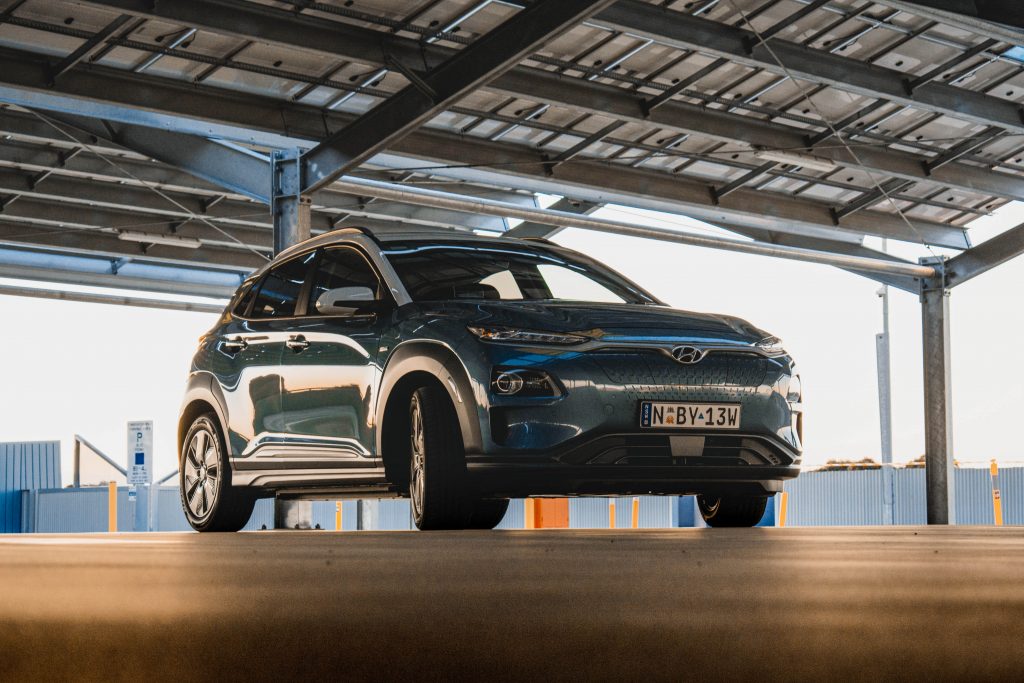
EV technology is very much still emerging, and electric motors and batteries are still the most expensive part of EVs. Having said this, compared to other electric vehicles, the Kona Electric, with its 449km claimed range, isn’t exorbitantly priced. If you consider long driving range as important in your EV, the Kona Electric is reasonable value for money.
Competing EVs such as the 270km-capable Nissan Leaf costs $49,990, the 311km Hyundai Ioniq Premium costs $52,490, while a BMW i3 offers 310km for $68,700.
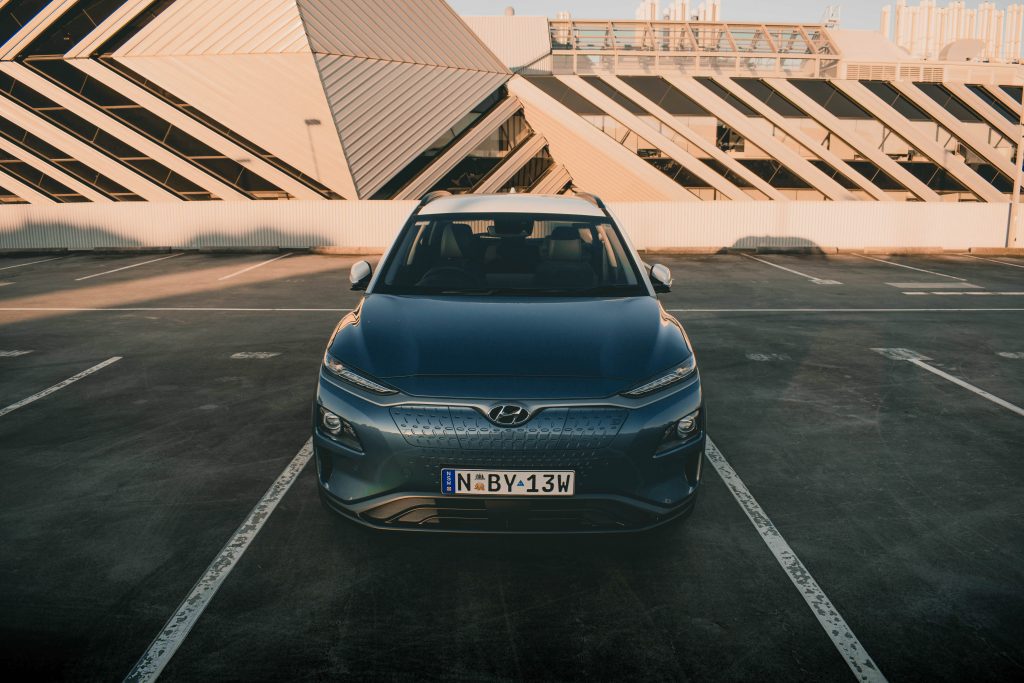
That $65,290 list price is for the top-spec Highlander variant we tested here, the 2020 Hyundai Kona Electric is also offered in slightly cheaper Elite spec, at $60,740 MSRP. This model misses out on LED headlights and front parking sensors. We aren’t sure why Hyundai offers it locally as it misses out on quite a few features for a sixty grand car. When people are willing to spend so much on a car that clearly has budget origins, they shouldn’t be forced to spend even more for the Highlander which comes more appropriately equipped.
So what does the Highlander come with? Quite a lot. For your money, you get leather upholstery with heated and cooled front seats with electric adjustment, a heated leather steering wheel, dual-zone climate control, auto LED headlights/wipers, auto high-beam, 17-inch alloy wheels, keyless entry and push-button start, an electronic park brake, an auto-dimming rearview mirror, tinted rear glass and a 7.0-inch digital instrument cluster.
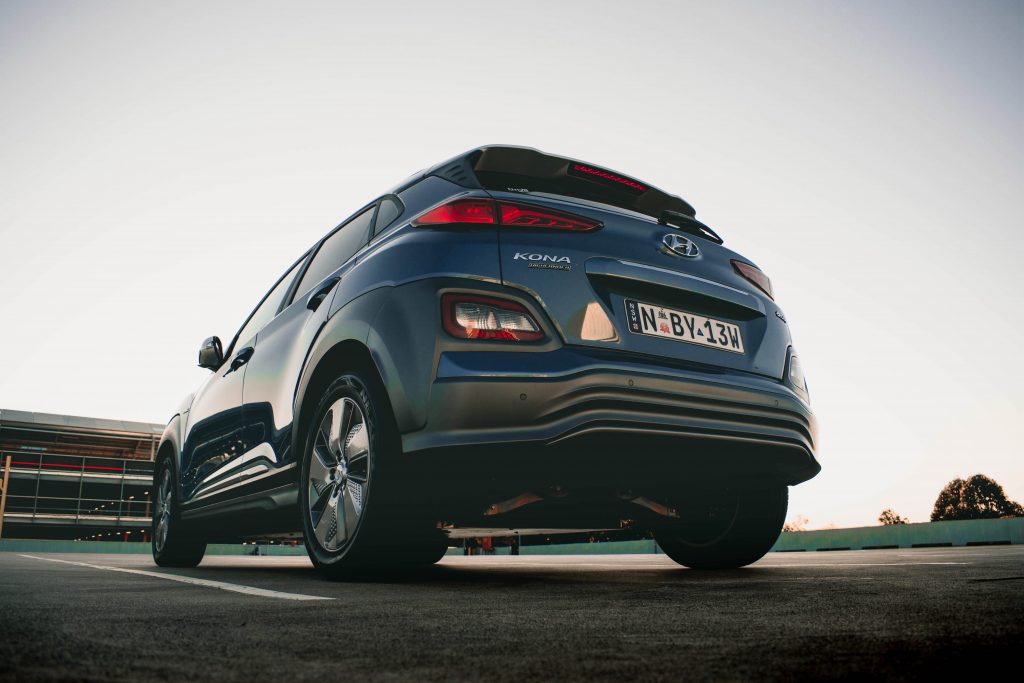
Our Kona Electric featured Hyundai’s new 10.25-inch infotainment screen with DAB digital radio, Apple CarPlay and Android Auto, full Bluetooth connectivity, satellite navigation with live traffic updates, and an eight speaker sound system by Infinity. There’s a wireless charging pad to charge your mobile phone and a fancy heads up display (HUD) sitting in front of the driver.
We loved the look of our Kona Electric which featured a body in Ceramic Blue along with a contrasting Chalk White roof colour.
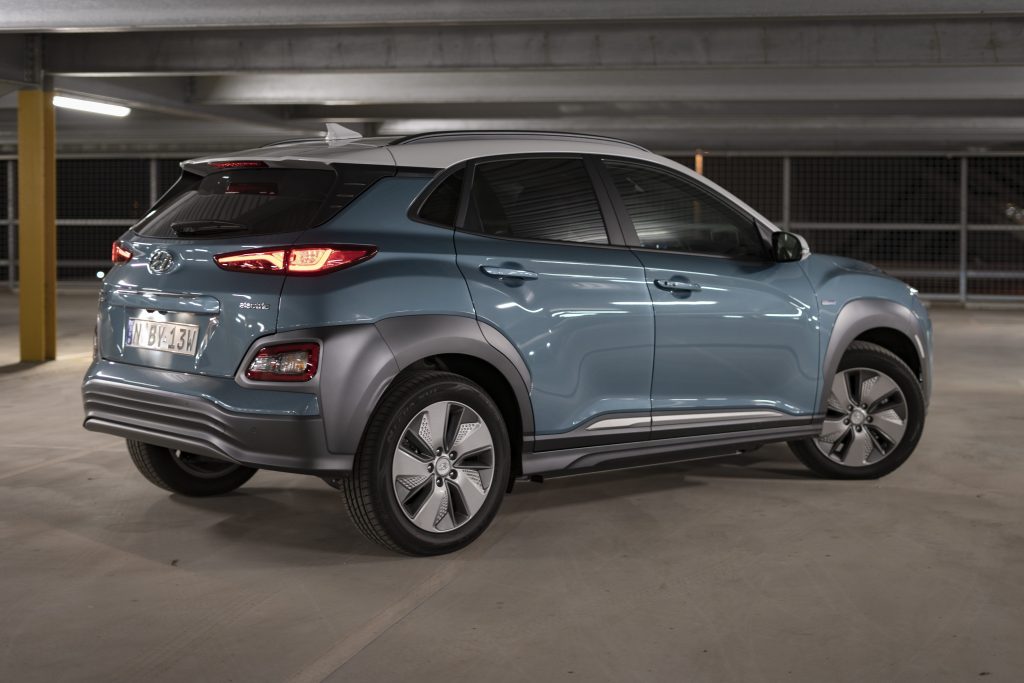
The Kona Electric was the first electric car to be crash tested by ANCAP and was awarded a 5 star ANCAP crash test rating thanks to its comprehensive suite of six airbags, auto emergency braking (AEB) with pedestrian detection, adaptive cruise control with stop and go functionality, lane keep assist, lane departure warning, blind-spot monitoring, rear cross-traffic alert, and driver attention warning.
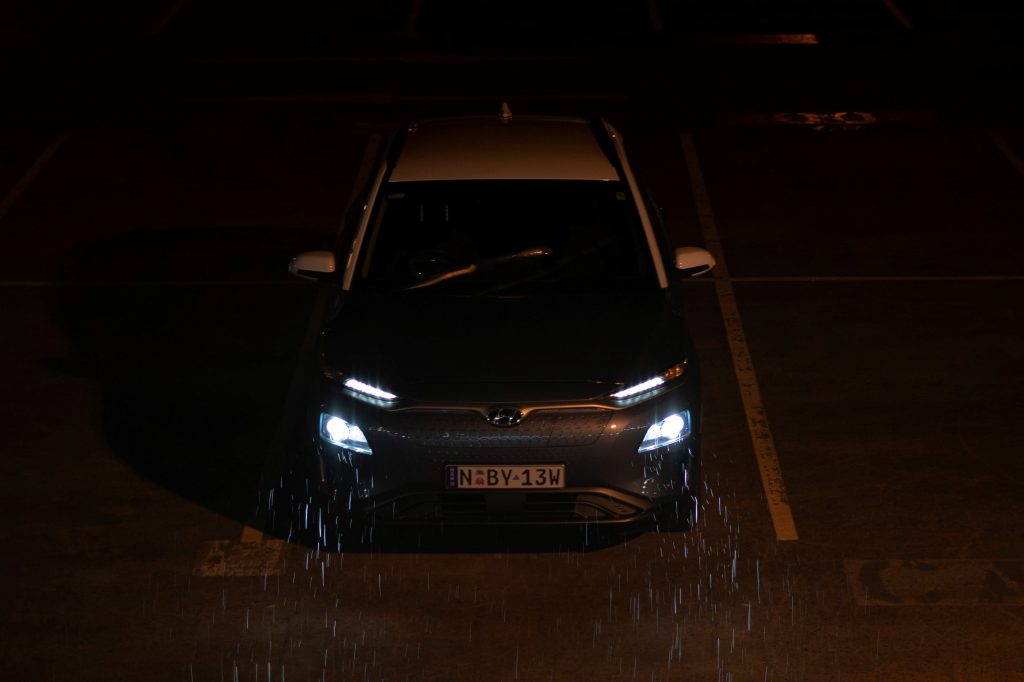
Engine & Drivetrain
In place of the usual petrol engine under the bonnet, the Kona features a compact electric motor. Think of it as the same sort of motor used in trams or even golf carts. With 150kW and 395Nm, the Kona Electric is currently the most powerful variant of the Kona range, well ahead of both the 1.6 turbo and 2.0 litre petrol Kona.
In an electric car, there is no transmission – just a single-speed reduction gear, meaning that there are never any gear changes. Floor the accelerator and you will be met with a silky smooth rush of acceleration, and pure silence, unlike anything you have seen in any petrol- or diesel-powered car.
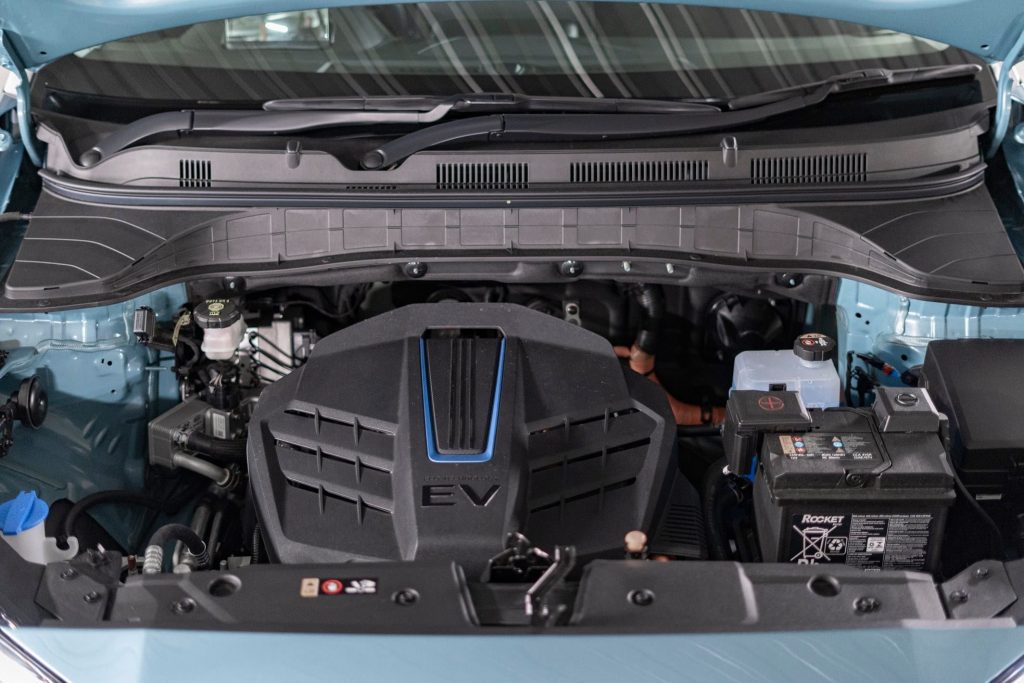
0 to 100km/h takes only 7.6 seconds, but the Kona electric always feels faster than the numbers suggest. In the dry and particularly in Sport mode, there is never any lag when you ask for acceleration, you are just silently thrust forward with ease. An eerie silence accompanies each burst of acceleration, along with no vibration at all. If you haven’t experienced an EV before, you’ve got to take the Kona Electric out for a test drive, you’ll find it outright fast.
In the rain, the standard eco tyres fitted to the Kona Electric will spin all too easily, even in Eco mode, which is the least responsive of the three drive modes. With so much torque going through such low grip tyres, it’s important to drive smoothly and apply the accelerator gently.
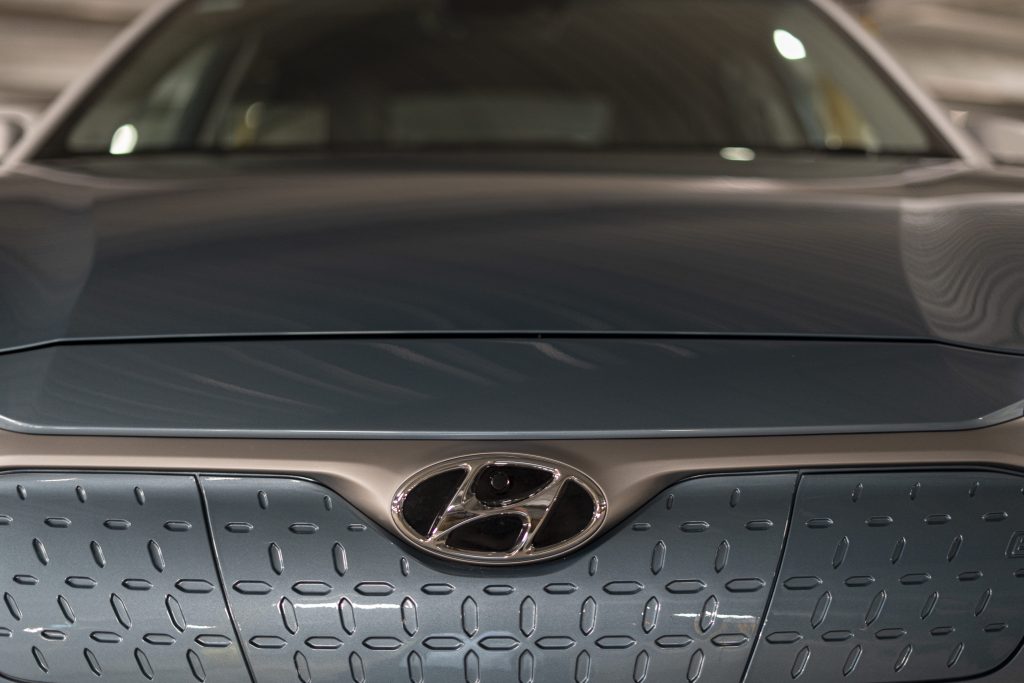
As with all EVs, the battery pack is charged as you decelerate, meaning that at the end of a downhill drive, your actual range might actually increase. Another handy feature of the Kona Electric driving experience are the paddles behind the steering wheel. They let you choose how quickly the car decelerates when you take your foot off the accelerator, and therefore how much charge gets funnelled back into the battery.
Electric car efficiency is measured in kWh per 100km, much like litres per 100km in a petrol car. Hyundai claims that the Kona will use 15.3kWh per 100km, we actually managed to average around 14kWh per 100km driving normally around Melbourne. An amazing result, and a real testament to the Kona Elctric’s efficiency, showing that Hyundai’s claimed range of 459km holds true in the real world.
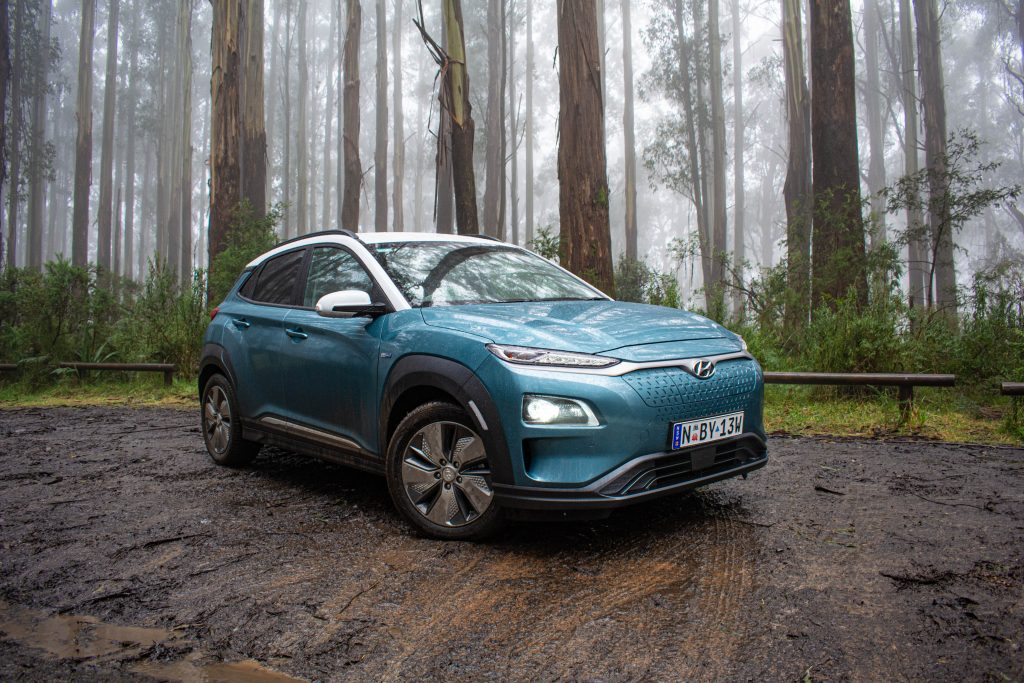
Part of that comes down to the weight of the Kona Electric. Weighing in at 1685kg, the car might weigh 300kg more than the regular petrol Kona but is still on the light side for an EV.
In a regular car, the heater merely scavenges the heat created as a byproduct of the combustion process. In an electric car however, electricity must be used to heat the air coming into the car.
On cold Melbourne mornings when we had to run the heater, we can safely say that your range will drop by 10% in cold weather as soon as you push the dedicated heater button. Expect the same impact to be felt when the A/C is run in summer. For maximum range it’s best to use heated and cooled seats. Safety features such as interior lights, instruments, the headlights and wipers are all powered by a separate battery so they do not impact range.
It’s unlikely that you’ll ever be stranded however as the range estimate in the instrument cluster is extremely accurate and recalculates quickly as conditions change, be it your driving or your interior temperature demands.
Driving purely in urban environments would mean that many people could go for a whole week without needing to charge their Kona Electric. Heading out into the country or interstate will be problematic however as you will need to carefully plan your trips to ensure you do not run out of charge.
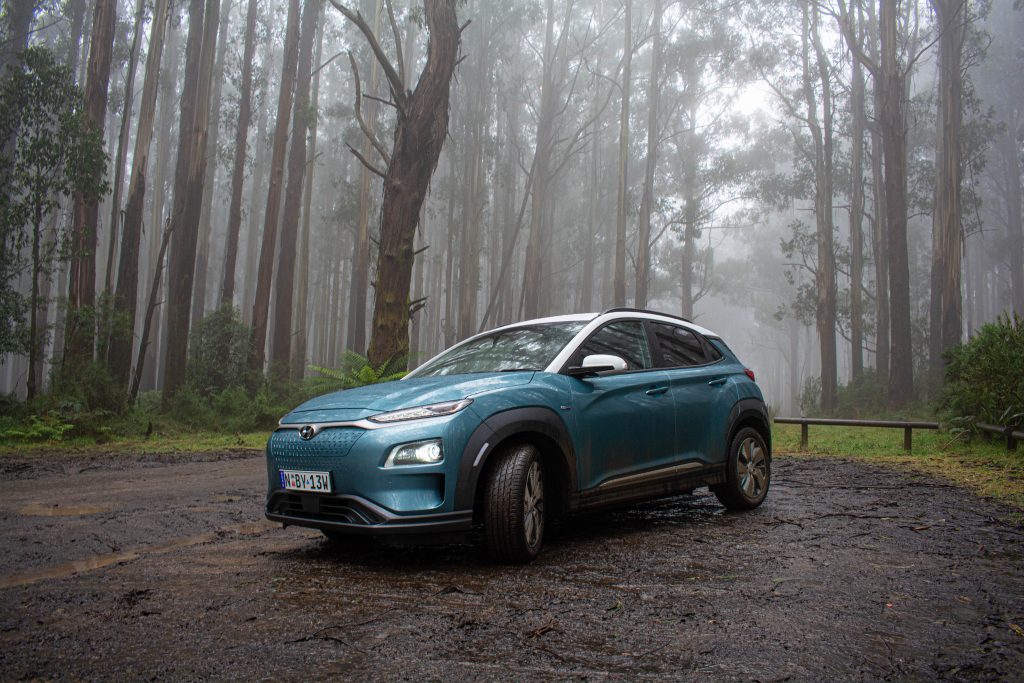
What about charging times? Sadly, we never had access to any special charging facilities. Over the course of our week with the car, the Kona Electric was charged purely from the household power outlet next to our driveway. Charging at home necessitated the use of the “emergency charging cable” found in the boot and would take 28 hours to complete from 0% to 100%. Luckily, we never used more than 25% of the battery in a day meaning that after an overnight charge, our Kona was always fully charged.
To charge the car faster at home, you’ll need a special home charging station with an output of 7.2kW that can be installed for around $2000. The charge time is said to be 9 hours and 35 minutes.
Faster chargers do exist in Australia and a Level 2 50kW fast charger will get you to an 80% charge in about 75 minutes. Find a 100kW charger (which is the most powerful charger the Kona Electric can take) and you should reach 80% in just 54 minutes. We hope that our Government joins the push for electrification, so that more charging infrastructure can be readily accessible by EV owners.
Ride & Handling
The 2020 Hyundai Kona Electric is easy to get in and drive normally just like any other regular car. Both around town, and on the open road, the Kona Electric proved to be pretty comfortable. Around town it soaks up bumps easily while on faster country roads the ride can feel a tad firm, with the suspension struggling to keep the Kona Electric’s heavy body in check. We did get a few complaints from rear seat passengers regarding their heads bobbing a bit too much on some country roads.
Show the Kona Electric some corners and you’ll be a little perplexed. Whilst the suspension has been tuned by Hyundai’s Australian team to please keener drivers, it sometimes struggles to hide the Kona Electric’s heavy mass as the car struggles to change direction quickly.
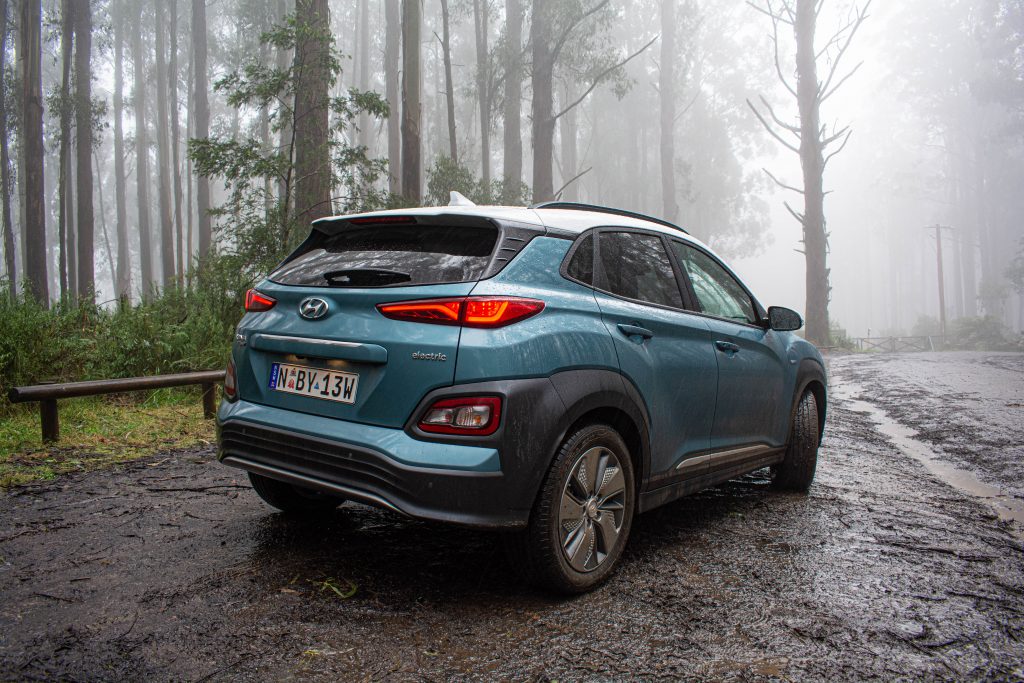
Having said this, as the batteries have been mounted down low, under the floor, the Kona Electric doesn’t lean too much through corners. The steering is nicely weighted and direct, and overall the car feels solid on the road. Just don’t go anywhere near the accelerator during a corner as the front tyres will get overwhelmed easily. Overall, you’ll enjoy driving this car, even if it isn’t the last word in sporty handling.
Wind noise and road noise are well subdued unless you’re driving on coarse-chip roads outside of town. The lack of noise from the engine makes for a mostly serene driving experience around town, making every conventional car you’ve driven feel prehistoric.
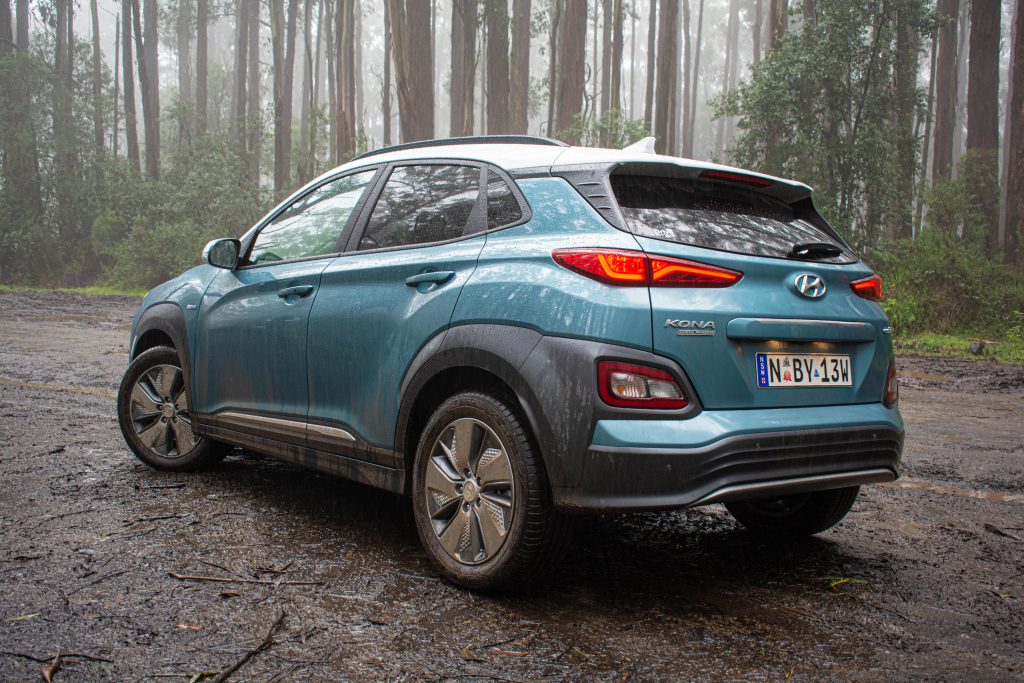
The brakes do take a little getting used to. They feel mostly conventional, and putting your foot down activates both the regenerative braking through the electric motor, as well as the usual friction brakes when stronger stopping power is needed.
Interior & Practicality
Being the only all-electric small SUV on sale in Australia is one of Kona Electric’s biggest selling points. For those interested in a vehicle with a compact footprint and a higher seating position, any Hyundai Kona is bound to appeal to you, electric version or not.
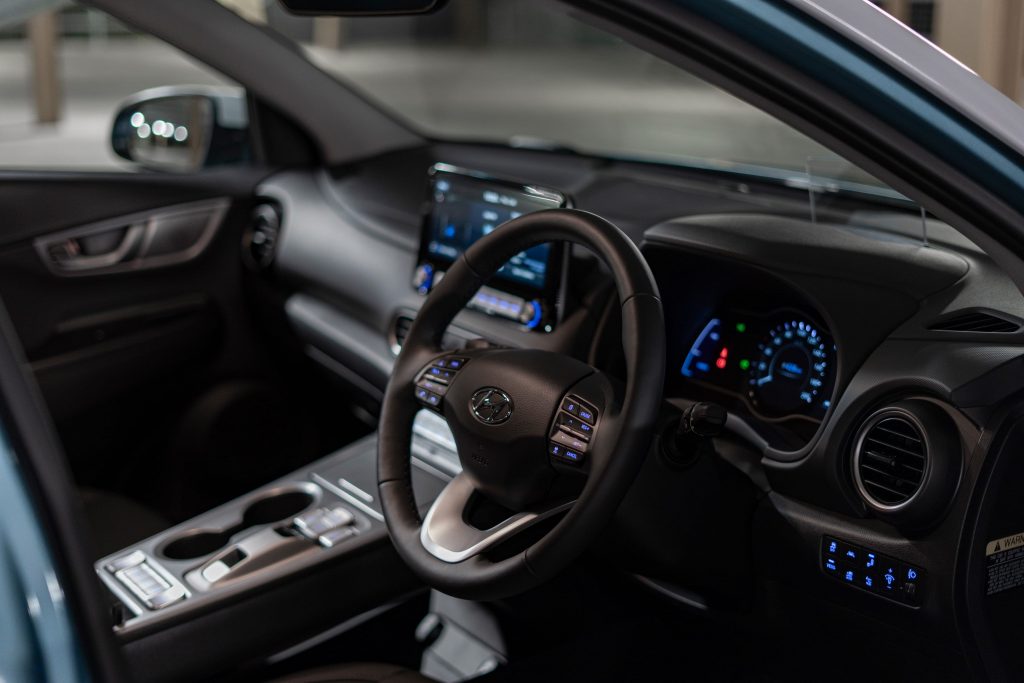
Much like its smaller sibling, the Hyundai Venue, the Kona is on the smaller end of the SUV scale and will appeal to those who aren’t looking for a huge amount of room inside their car.
So is the Kona Electric just as practical as the regular petrol models? Sadly, that’s not quite the case.
The 2020 Hyundai Kona Electric’s boot capacity is 332 litres, which is 31 litres less than a petrol Kona. Under the boot floor there’s room for the “emergency charging cable” and a tyre repair kit. No spare wheel here.
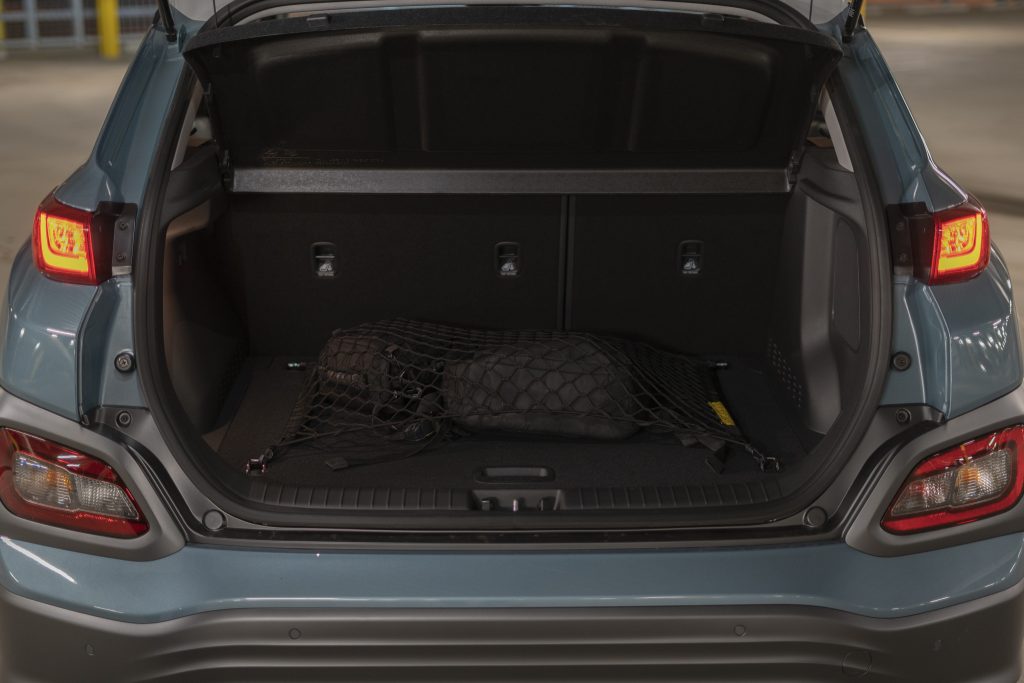
As we said , the battery pack is under the floor of the Kona, and that means there’s less foot room for rear seat passengers as the car’s floor is a few centimetres higher than in the petrol variant. Our rear seat passengers complained that their knees were pushed up a bit as a result, in a car where rear legroom is already limited.
Speaking of the rear seat, you’ll find map pockets, door pockets with bottle holders, as well as a flip down armrest with cup holders. Sadly, you won’t find any rear air vents or USB points for rear seat passengers.
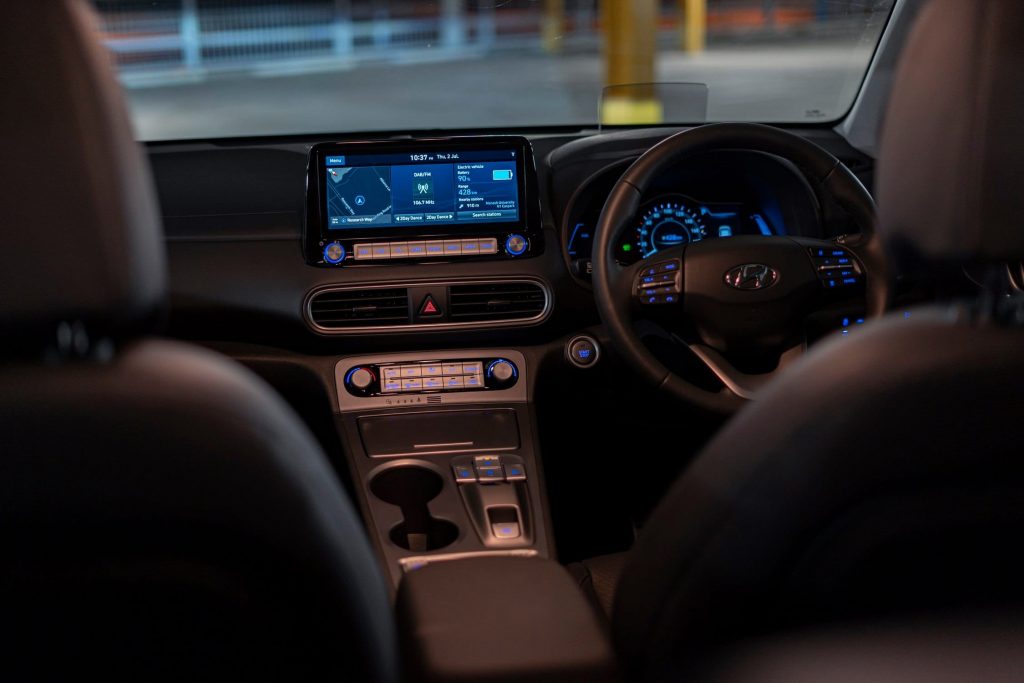
Sitting in the front of the Kona Electric, you’ll appreciate how much light comes into the cabin and what an airy feel it has. The Kona Electric’s interior feels a bit more special than the regular Kona’s with a redesigned floating centre console and a push-button gear selection interface.
The heated and cooled seats along with the heated steering wheel mean that both cold mornings and sweltering summer days will be much more bearable.
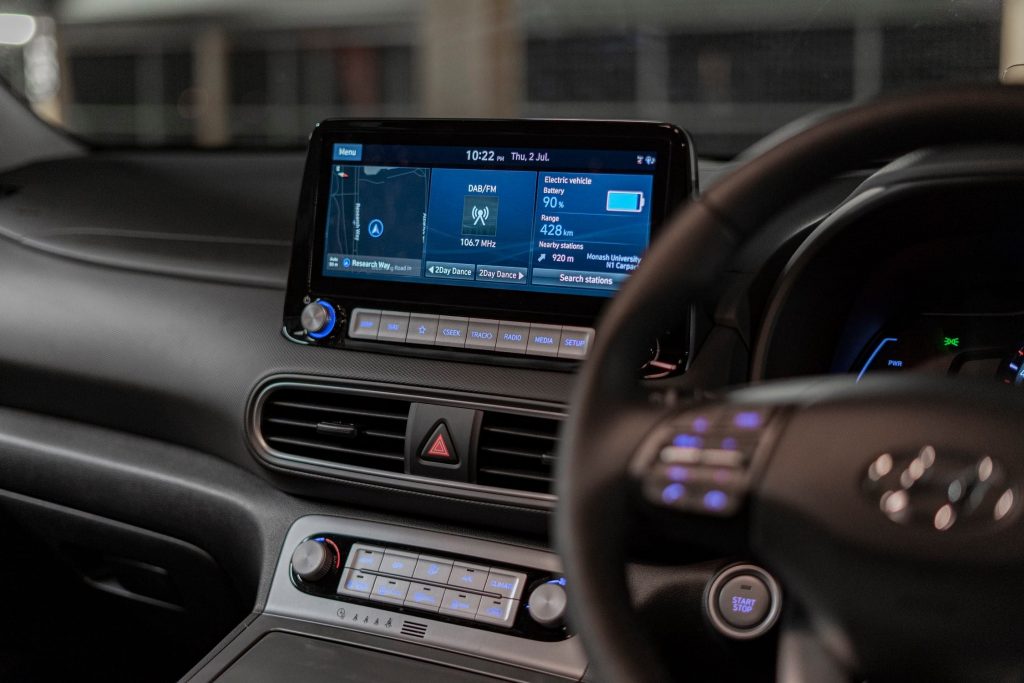
The large 10.25 inch screen works very well, and is smooth and responsive to the touch. Fonts and graphics are crisp and everything loads quickly. A word of caution however, due to the widescreen aspect ratio of the display, Android Auto only opens on the left half of the screen.
The 7 inch digital screen which replaces traditional instruments in front of the driver is crisp and legible in bright sunlight, displaying much more than just the car’s speed, such as range and your energy consumption.
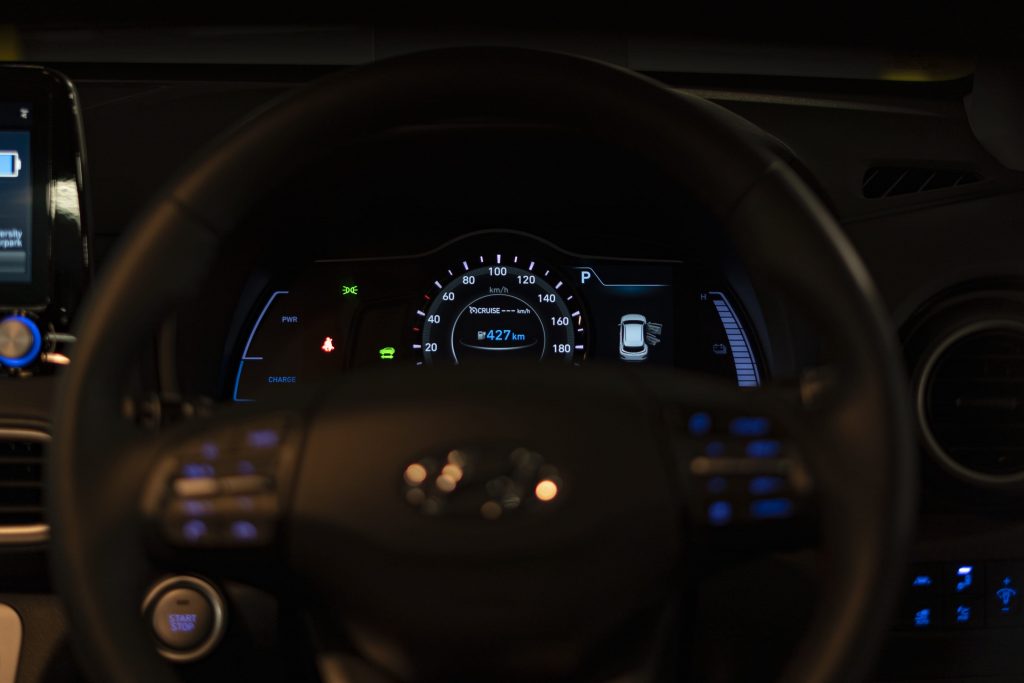
Running Costs & Warranty
Being an EV, the 2020 Hyundai Kona Electric will never see a petrol station during its life. The Kona Electric’s servicing intervals are 12 months or 15,000km (whichever comes first), with each of first five visits currently capped at $165.
While there is no conventional engine to look after, and therefore no oil changes, Hyundai still wants the car to come in for its yearly checkup.
Like Hyundai’s wider range, warranty is five years with no kilometre limit, but the battery warranty extends to eight years with a 160,000km cap. This warranty might be fine for private owners, but for businesses seeking to use the Kona Electric on a daily basis you might exceed the kilometre cap.
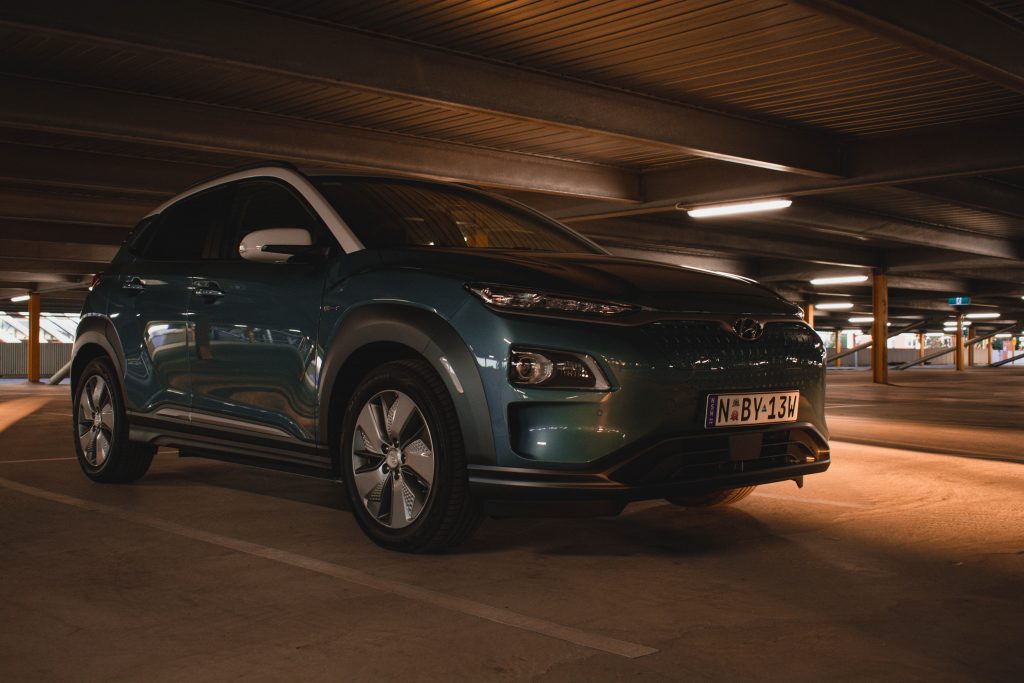
There are three service packs that can be pre purchased from Hyundai: three years/45,000km ($495); four years/60,000km ($660); five years/75,000km ($825). This is in stark contrast to the to the five-year option for a petrol Kona which costs $1430.
Hyundai also includes their roadside assistance cover for 10 years.
Conclusion
Owning an EV in Australia isn’t made any easier by the lack of fast charging infrastructure or the lack of financial incentives from our government to buy EVs. Whilst Tesla might spring to mind as the company at the forefront of EV technology, cars such as the 2020 Hyundai Kona Electric are starting to become viable alternatives to buying conventional vehicles on account of their long range and ever improving affordability.
Our experience with the Kona Electric over the course of one week was nothing other than eye opening. From the ease with which it gains speed silently without producing a single gram of CO2, to its real life 449km range, the 2020 Hyundai Kona Electric is the catalyst behind Hyundai’s attempt in making the electric car much more affordable for everybody.
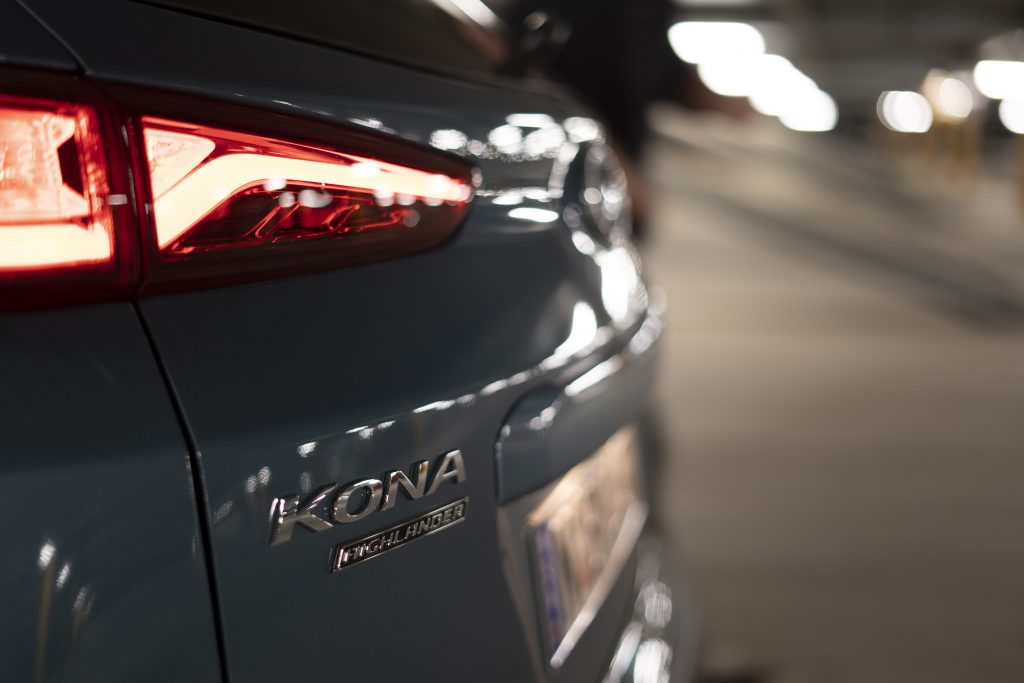
The Kona is a breakthrough car in that it squarely addresses the traditional EV shortcoming of short range and exorbitant price. Yes, it does cost double the cost of traditional small SUV, but it drives well, genuinely delivers comparable range to a petrol-powered small SUV, and retains all of the packaging benefits compact SUV buyers crave. For the money, no other EV manages to match the range of the Kona, and for that Hyundai must be applauded.
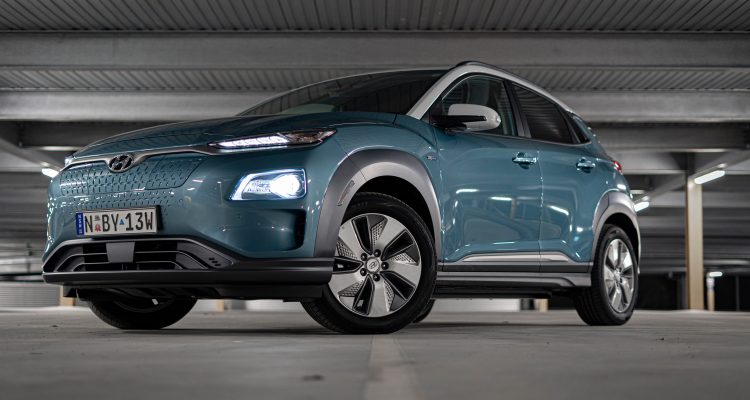
Leave a Reply